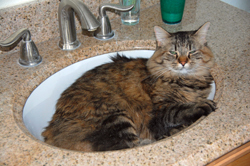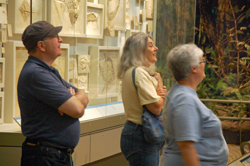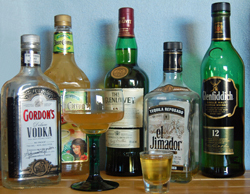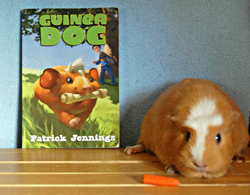Jane Lindskold's Blog, page 106
July 6, 2016
Jinx!
The other day, Jim and I were performing a delicate procedure. When he announced we were done, I said, “Done? You didn’t even tell me when we’d hit the half-way point!”

Heavy Clouds. Maybe Rain?
He said, “It was going so well I didn’t want to say anything. I think I was afraid I’d jinx us.”
I actually understood… And then I thought how odd it was that I did. I mean, would the outcome have changed? Probably not. In fact, knowing that we were half done would have made me more, not less, determined to see if we could finish the procedure in one go.
Nonetheless, not talking about something about which one hopes for a good outcome is perhaps the most potent modern superstition there is.
I looked up the word “jinx” before writing this. Interestingly, my elderly (1947) Shorter Oxford English Dictionary doesn’t even include the word. My Dictionary of American Slang (1960) did, defining it as “Bad luck; a cause of bad luck; a bad luck omen.” Online dictionaries weren’t much more helpful. Even talking about a jinx seems to be a jinx…
Sports is one area where fear of the jinx manifests itself most vividly – and not only among players, but among fans as well. Don’t believe me? Next time you’re with a bunch of avid fans of any sort of contest, say “Well, that’s a sure win!”
Almost certainly someone will protest, “Don’t say that! You’ll jinx them!”
Now, this might make some sense if the speakers were active participants. Overconfidence certainly can lead to carelessness. For example, Jim might have subconsciously dreaded that if he told me we were half-way done, I might have ceased to be as attentive as I needed to be.
But that observers should feel their words could influence the outcome… That defies logic! Yet even fans of a televised contest will react as if their words, actions, even attire, can affect a win/lose situation .
I’m not much of a sports fan, but I see my own fear of “jinxing” something manifest in regards to weather… Here in New Mexico, we almost always need rain. However, if Jim mentions that some nice thunderheads are forming, my likely reaction is “Don’t say anything. You might scare them off!”
Do I really believe this? Well, intellectually, of course I don’t. However, human nature is far from wholly intellectual. On some level, I guess I must believe that.
But there’s another thing with which I associate the word “jinx.” Oddly enough, it seems to have absolutely nothing to do with the first.
When you were a kid, did you say “Jinx!” when two people said the same thing at the same time? If so, did you have a reason for doing so? As I recall, it was mostly for fun, but there was a vague sense that if you said “Jinx!” first, then you were averting some sort of bad luck that, I guess, came from the coincidence.
I wonder if the entire complex of reactions surrounding the concept of the jinx has to do with the fear that drawing attention to something will cause some supernatural force to decide to influence matters so that the desired outcome won’t happen. That would certainly tie together two otherwise unconnected associations of the word.
Two people saying exactly the same thing at the same moment is an odd occurrence. This oddity, then, could draw attention of supernatural forces… Right?
Or not! Whatever the case, I love these little manifestations that show how superstition still reigns, even in our supposedly modern, intellectually dominated, scientific era.
Now I’m wondering, what other old superstitions still reign supreme. Black cats crossing your path? Walking under ladders? Broken mirrors?


July 1, 2016
FF: Best Thing About Air Travel
The best thing about air travel is that it gives me a lot of time to read. That’s why this week’s print list is so long and the audio is not.

They’re Not Using It!
For those of you just discovering this feature, the Friday Fragments lists what I’ve read over the past week. Most of the time I don’t include details of either short fiction (unless part of a book-length collection) or magazine articles.
The Fragments are not meant to be a recommendation list. If you’re interested in a not-at-all-inclusive recommendation list, you can look on my website under Neat Stuff.
Once again, this is not a book review column. It’s just a list with, maybe, a bit of description or a few opinions tossed in.
Recently Completed:
A Caribbean Mystery by Agatha Christie. Audiobook. Reader has no idea how to do American accents, but otherwise is fine. Miss Marple looks for trouble – and finds it. An old favorite.
Nobody’s Princess by Esther Friesner. Fun read, really picked up after first third.
Kingfisher by Patricia A. McKillip. The kitchen element grounded an oft-retold legend. I also like the modern take on knights.
Escape from Mr. Lemoncello’s Library by Chris Grabenstein. Recommended by my eleven year-old nephew Tim. I quite enjoyed.
Jellicoe Road by Melina Marchetta. I loved this book the first time I read it. If possible, I loved it more the second time.
In Progress:
Negima! Magister Magi by Ken Akamatsu. Manga. I’d read the first 23 of these, then a gap in library holdings caused me to stop. Now I’ve started again.
Wonders of the Invisible World by Patricia A. McKillip. Short story collection. Just started.
Onion Girl by Charles De Lint. Audiobook. I read this in print when it first came out. Seeing the audio tempted me into a revisit. Just started.
Also:
Proofing a manuscript, again…


June 30, 2016
TT: Skiffy Cocktail Culture
JANE: Last time we were talking about cocktail culture. Rather than recap, I’d like to let someone else explain some of the details. Author Carrie Vaughn (Kitty and the Midnight Hour and many other books) provided a really interesting look at how cocktail culture is not only reviving, but thriving. In answer to my question she said:

Speculative Cocktails
“It’s morphed. There’s actually a huge surge in interest in vintage cocktails right now, running in parallel with a rise of local craft distilleries (much like craft breweries of 20 years ago) making small-batch hard liquors and vintage liqueurs. Go into trendy bars and restaurants and you’ll actually see things like Old Fashioneds and Aviations on the menu, which wasn’t true even 5 years ago. Absinthe is a thing now. We have an absinthe bar here in Longmont CO [Colorado].
“Instead of ‘cocktail hour’ you’ll see dedicated ‘cocktail parties,’ where the whole point is to try out new labels of liquor and new (or vintage) recipes for cocktails. Craft distilleries have tastings and mix up things like Moscow Mules and Sazaracs, and all kinds of vintage cocktails that are making a comeback over more mainstream drinks.
“So yes, cocktails are totally a thing but it’s kind of a younger, hipstery thing right now.”
ALAN: Since I’m neither young nor hipstery, I have no idea if this kind of thing happens here. But I suspect not – locally made movies and TV shows (which presumably reflect local culture) still show the bright young things drinking wine and beer.
JANE: Indeed, based on what my contacts (both younger and older) told me, wine and beer are still the most common party drinks.
Interestingly, cocktails may have evolved for a very practical reason. Walter Jon Williams (author of all sorts of great books, including Hardwired and Metropolitan) offered some interesting (and humorous) thoughts on this. He says:
“It’s my guess that a lot of classic cocktails, like the sazerac and the Manhattan/Brooklyn, were invented to disguise the fact that you were drinking crap liquor. I mean, why else mix whiskey with fruit juice, unless you wanted to hide the taste of really bad whiskey?
“There are also the drinks that enabled the British to conquer their empire, one of which is (ironically) named the French 75. Which may be French, but is still an artillery piece, what with a mixture of gin and champagne.
“And then there’s the pink gin, which sounds very civilized but is about 100% gin, with a couple drops of bitters to give it the color. I’m guessing the Brits were 100% drunk all the time, which accounts for some of the places they ended up. ‘Where are we?’ ‘Mandalay.’ ‘Blimey, last I remember was going into the lounge bar at the Elephant and Castle, and ordering a pink gin.’”
ALAN: That’s the most sensible explanation I’ve ever heard for the evolution of the British Empire. However I suspect the real truth of the matter is that the British created an empire so that they’d have someone to play cricket with.
JANE: How about a combination of both? Excessive drinking to explain locations and cricket as a reason to keep expanding. After all, they’d need to work hard to find other players!
But I grow silly (and I’m not even drinking).
Since cocktails may have evolved to disguise the taste of the spirits, following the directions from another time and place may not be the best way to recreate the experience.
My friend Chris Krohn shared some of his experiences in this area: “We learned an important thing from the period recipes: Step one is cut the lime juice amount in half. WOW! Another idea we tossed around was that everyone was smoking like chimneys, so they opted for really strong flavors to cut through to their smoke-dulled palates.”
ALAN: Iain Banks (a Scottish author who wrote a lot of SF under the impenetrable pseudonym of Iain M. Banks) once wrote a whole book about the history and production of whisky in Scotland. In order to gather research material, he visited all the distilleries and sampled their wares. He was astonished by the number of friends who offered to help him with this onerous task…
But didn’t you say something about SF related cocktails?
JANE: I did indeed. Some are simply related to various works, others attempt to recreate cocktails mentioned in books.
George R.R. Martin is very proud that his Jean Cocteau Theater designs specific cocktails for each of their special guests.
He gave this example of the sort of “theme” cocktail the bartenders design: “For instance, when Ernie Cline was here… we did an ‘Easter Egg’ cocktail with mini Rubik’s Cubes floating in it, and sold close sixty of ’em.”
Apparently, Game of Thrones has inspired numerous cocktails. Prominent East Coast fan Dave Axler mentioned “…the ‘Dragon’s Egg’, which was served aflame!”
ALAN: Sometime in the 1970s I attended a theatrical performance of Douglas Adams’ The Hitchhiker’s Guide to the Galaxy. Naturally, in the interval they served Pan Galactic Gargle Blasters. I’m not sure of the exact recipe, but it involved copious quantities of champagne and lots of blue curacao, with dry ice to give the drink that authentic SF fuming effect. I recall that the second half of the show was rather blurred.
I suspect that other SF-related drinks may have made an appearance at various fan gatherings, though I don’t recall ever seeing any bottles of Sirian Panther Sweat, that tipple beloved by Harry Harrison’s Stainless Steel Rat…
JANE: Hmm… I went and looked on-line. I didn’t find a recipe for Sirian Panther Sweat, but I did find one for something called “Panther Sweat.” It involved tequila, banana liqueur, triple sec, and grapefruit juice. That sounds like something that should be banned on any world – civilized or not!
A quick check showed that various SF-themed cocktails have been created by experiment-minded fans. Some are tied directly to drinks featured in stories, others are inspired by the stories. Unsurprisingly, television shows and movies seem to inspire more than books – possibly because unless a drink is a specific plot element, it’s easier to overlook.
ALAN: So let’s have a party. I’ll bring the Victory Gin (from George Orwell’s 1984, there’s a free white stick given away with every bottle) and you bring the tonic.
JANE: I think I’d rather have a Romulan ale. If I’m going to get blasted out of this world, I’d rather do it with alien booze.
I wonder if any of our readers have ever given or attended an SF-themed cocktail party? Handled right, it could be a lot of fun.


June 29, 2016
Off to Pittsburgh!
Last week, Jim and I spent several days in Pittsburgh, Pennsylvania. There’s nothing like travel to remind you how varied the U.S. can be. We left Albuquerque during a series of dry days where temperatures topped 105 degrees, then arrived in Pittsburgh to rain and 72 degrees.

Me, Scot, and Jane Among the Dinos
On Friday, our friends Scot and Jane Noel picked us up and took us to see some of the sights of downtown Pittsburgh. As you may recall, I worked with both Scot and Jane on the computer game Chronomaster. After the game was released, we stayed in touch. Since then, we have worked on a variety of projects, including an art contest for which I wrote the short story “Born from Memory” to go with the first place winning piece.
Last time we saw Scot and Jane was in New Mexico where we took them to see various things, including the petroglyphs near our house. This time, the sights were a lot greener and more brightly colored. We started at the Phipps Conservatory which amazed and delighted us with its marvelous variety of plants and sculptures. Again I was fascinated by what a difference a shift in climate can make when growing the same plants. I grow Swiss chard, but I’ve never had any success with the “Bright Lights” variety. At Phipps, not only were they successful, their chard had leaves big enough to wrap a baby in!
After we’d finished with the Conservatory, we moved on to sample the Carnegie Museum. We didn’t have time to see anything close to all of the exhibits, but we very much enjoyed the dinosaurs, gems and minerals, and a few other fascinating and beautiful things. We also enjoyed what we saw of Pittsburgh itself, especially the widely varied architecture and numerous bridges and tunnels.
On Saturday, my sister, Susan, and two of her kids took us to Meadowcroft rock shelter. In the world of archeology, Meadowcroft is famous for being one of the places where their discoveries broke the “Clovis first” theory of human habitation in the New World, pushing back the span of human habitation by several thousand years.
We were extremely lucky that James Adavasio, who directed the excavations at Meadowcroft, was in the area and giving a lecture. Adavasio is an excellent speaker, with a wide breadth of interests. One of the elements of his talk was showing how the theories put forth in early archeology – in which the work was done almost solely by men – were shaped by the male perspective to the point of ignoring the contributions of women and children. He managed to be humorous, as well as informative. I know that Jim and I enjoyed the subsequent tour all the more for having heard his talk.
Afterwards, we toured a model Indian village complete with a variety of dwellings. I found myself taking feverish mental notes (and asking Jim to take a few photos) of some of the different types of shelters. We also had a chance to throw atlatl darts at a deer-shaped target. We all missed… According to the docent, this meant we should all have only salad for dinner, as a reminder of how hard it can be to put meat on the table.
The weekend wasn’t all museums, conservatories, and academic lectures, of course. We went and watched my young nephew play baseball, hiked, talked about books, and even played Clue. This last led to us renting and watching the very silly movie based on the game…
I discovered that, after something like thirty years, I still remember how to play badminton. Jim’s whiffle ball pitching got a thumbs-up from our baseball loving nephew.
Now that we’re back in New Mexico, those rolling green hills and that strange atmospheric phenomenon called “rain” seem more like myths than reality. And I have a short story to review.
Funny thing. Much as I enjoyed my holiday, I’m looking forward to getting back to the writing. Life is pretty sweet.


June 24, 2016
FF: Busy Week
Despite a very busy week, I managed to squeeze in reading time.

Kwhahe’e Contemplates Ravens
For those of you just discovering this feature, the Friday Fragments lists what I’ve read over the past week. Most of the time I don’t include details of either short fiction (unless part of a book-length collection) or magazine articles.
The Fragments are not meant to be a recommendation list. If you’re interested in a not-at-all-inclusive recommendation list, you can look on my website under Neat Stuff.
Once again, this is not a book review column. It’s just a list with, maybe, a bit of description or a few opinions tossed in.
Recently Completed:
The Raven King by Maggie Stiefvater. Solid conclusion to the excellent “Raven Cycle.”
Guinea Dog by Patrick Jennings. Middle grade. I still like the cover, but I am always concerned about books that misrepresent animal behavior, even when – as in this book – there is eventually a gimmick to explain it.
The Inimitable Jeeves by P.G. Wodehouse. Audiobook. Read by David Case, who is one of my personal favorite readers. Enjoyed. Again. I’d forgotten how much Wodehouse’s language can carry me along.
The Drum, the Doll, and the Zombie by John Bellairs, posthumous completed by Brad Strickland. I’m a great admirer of Bellair’s middle grade horror/mysteries. Somehow, I’d missed this one. Strickland does a good job keeping the feel of Bellairs’ prose without be strangled by it.
In Progress:
A Caribbean Mystery by Agatha Christie. Audiobook. Reader has no idea how to do American accents, but otherwise is fine. Miss Marple looks for trouble – and finds it. An old favorite.
Nobody’s Princess by Esther Friesner. Helen of Troy was a Spartan. Esther Friesner brings out a new dimension of a classic mythological figure.
Also:
I’m still behind on Archeology and Smithsonian, and now quarterly periodicals are coming in. Arrgh!


June 23, 2016
TT: Retro or Rockin’?

Elegant Assortment
JANE: I don’t know where or when or who said it, but I have a very firm memory of someone saying that – in addition to smoking – nothing makes an SF story seem more out of date than having the characters all sitting around drinking cocktails.
This got me wondering. Are cocktails automatically “retro”? Has coffee culture replaced cocktail culture?
ALAN: Interesting questions, and I must confess that I can’t answer them. Mainly because I know almost nothing about cocktail culture.
JANE: I did some research and, here in the U.S. at least, cocktail culture seems to be perceived simultaneously as out-of-date and ultra-retro-chic. Moreover, whether old style or new, it seems to be very, very skiffy.
Would you be interested in taking a look at how this odd set of circumstances developed?
ALAN: Yes please. As I said this is all pretty much a closed book to me.
About all I know about cocktails is that they are often served in the bars of hotels, particularly resort hotels, and they seem to consist largely of various fruit juices, solid fruit, cream, sugar and spirits. Often they come with a paper umbrella, a straw and sometimes a swizzle stick. They strike me as rather like dessert in a glass and given that most of them can also be ordered virgin (i.e. without alcohol), the analogy is perhaps even closer. Maybe they correspond to the fussy things on Starbucks menus that you compared to desserts? Anyway, I’m quite looking forward to what you have to say…
JANE: Thanks! As a non-drinker, my knowledge of cocktail culture is pretty much secondhand. However, I talked with a bunch of people of varying ages and came up with some interesting bits of information.
First, apparently cocktail purists don’t include those fussy drinks you mention above as cocktails.
Writer and editor Gardner Dozois commented: “I don’t think that daiquiris and Pina Coladas are considered to be cocktails. The real cocktail purists, like Michael Swanwick, don’t consider half the things that are on today’s cocktail menus to be cocktails either. He has a lot about this on his blog.”
My friend Chris Krohn added, “Some suggest that if it wasn’t poured from a cocktail shaker, then it’s not a cocktail. This tight definition, however, would preclude all fizzy drinks such as G&T [gin and tonic].”
ALAN: I’ve never met anybody who owns a cocktail shaker, though I do know people who drink gin and tonic.
My grandfather would drink something he called a “Gin and It” where the “It” was Italian Vermouth. That might almost have been a martini if he’d put an olive in it. But it wasn’t chilled – the British don’t do ice…
JANE: No ice? Weird!
When I was a kid – we’re talking 1960’s – just about any party (including casual ones like cookouts) featured cocktails.
At least where I lived, even in summer, these weren’t the sort of fussy dessert drinks you mentioned above, but harder hitting drinks like gin and tonic, whiskey sours, and martinis. About the only fruit you’d find in these were olives or, maybe, maraschino cherries.
John Maddox Roberts (author of, among other books, the SPQR series I’ve been mentioning a lot lately) offered the following, almost anthropological, assessment of earlier cocktail culture.
“I believe the domestic cocktail party as I remember them from my childhood was a result of the new postwar prosperity and the move into the suburbs. People were expected to actually know their neighbors and a major occasion for a cocktail party was when a new family moved into the neighborhood. Someone would throw a party and the newcomers could meet all their neighbors at once. After Depression and WWII austerity the varied and abundant liquors and mixers represented the new middle-class prosperity. I remember my mother saying how difficult it was to get even whiskey during WWII because of sugar rationing, Scotch was out of the question, Vodka hadn’t caught on yet but there was always plenty of cheap rum from Cuba and Bermuda. Rum and Coke was the order of the day.”
ALAN: Shortly after we moved to our new house, we had a meet the neighbours party. We had a couple of bottles of champagne for our guests to drink and there was beer in the fridge. Some people also brought beer or wine, and one non-drinker brought ginger beer. There wasn’t a cocktail to be seen.
Indeed, the only time I remember seeing any kind of spirits at a party was one we held after a friend died and we drank the rather sparse contents of his spirit cupboard in his memory. But wine, beer and bubbles are the more usual tipples.
JANE: That’s the case here as well.
I think John is right on target here – that cocktails involve a degree of expense and, therefore, aren’t just drinks, they’re social statements and more likely to be found in social settings.
John concluded his comment by noting, “Our generation started drinking during our college years and we could only afford beer and cheap wine and we’ve stayed loyal to those. And we rarely know or care who the neighbors are.”
However, cocktail culture is far from dead. It has simply morphed. My friend, Rowan Derrick, who is in her early thirties, had some interesting things to say about this.
“The driving factors are probably less to do with shunning cocktails specifically than they are with group dynamics and economics.
“Group dynamics because parties are more often a collaborative effort than a ‘hosted’ affair amongst this age group. That means that you have a group involved in bringing drinks. Cocktails would require more coordination, plus more accounting for differences in taste, than just asking people to show up with a bottle of wine or a six-pack.
“Economics because even a minimally stocked bar is a big up-front investment, so staying stocked for regular cocktail hours might be intimidating for a notoriously broke generation. Additionally, the amount of extraneous ingredients for some cocktails (citrus, cream, seltzer, tonic, syrups, etc.) adds up – both in terms of money spent and space taken up.”
ALAN: Also spirits get you drunk far too quickly. Personally, I prefer my alcohol in less powerful forms.
JANE: Actually, if getting drunk was the only point, then spirits would be a better choice but, as various people have noted, the point of a cocktail party is socializing with getting tipsy as a bonus.
So, there you have it… The routine cocktail hour of my childhood did indeed die out – probably due to economic and social shifts. However, as is so often the case, what was old is new again.
So I guess it’s okay to have your space travelers sipping cocktails as they travel the spaceways without that making the story automatically out-of-date.
However, they don’t need to stick to martinis. There’s a lot of SF specific drinks out there, both real and imagined. How about we save those for next time?


June 22, 2016
Oddities and Hobbies
This past weekend, Jim and I moved furniture… with slender popsicle sticks. No, I’m not kidding.

A Few of My Favorite Things
The furniture was dollhouse scale, and we were undertaking this as players of a German board game called Packen Wir’s!, but we did it. We proved to be pretty good at manipulating furniture without touching it. We only dropped two things: a pedestal table at the very beginning, and a grand piano with two chairs stacked on it at the end.
I have a feeling that if we ever play this game again, the other players won’t let me and Jim be partners. We just have too much practice moving things together. We’re also both fond of hobbies that involve careful manipulation of small or delicate items. In my case, that’s working with beads and polymer clay. In Jim’s, it’s making arrowheads.
It’s always interesting to see how one’s skills extend into categories that, on the surface, seem completely unrelated. You can make this a writing metaphor if you want. It’s certainly true.
And, yes, I’ve been writing. This past week, I finished reviewing the manuscript of a book I wrote a while back. Jim’s currently re-reading for me, because I did a lot of word-level tinkering, and that’s absolutely the sort of thing that contributes to the creation of new, completely unforeseen typos. He also likes the story a lot, which is gratifying.
Anyhow, when I finished my manuscript review, I was very much in the mood for writing something new. I’d had an idea for a short story a week or so earlier. I’d scribbled some notes to myself, and even worked on the story while I was waiting for new tires to be put on my car.
The fact that writing is also my job hasn’t changed my liking for it at all. As of the end of last week, I had much of the story set up and a strong sense of where the final portion might go. This week, I finished it up. I’ll let it mellow for a few days, then read it out loud and see how it flows.
This is the thing… I really like writing. Of my hobby activities, it’s definitely my favorite. It doesn’t need any equipment other than a writing implement and paper. (Yes. I do use a computer, but I don’t need a computer.) In a pinch, I can even do without pen and paper. Many a story idea has been fleshed out while I’m riding my bike or doing some routine chore.
By comparison, my other hobbies require tools, materials, and enough time to make hauling these out worthwhile. Gardening is wonderful, but when it’s over a hundred degrees (as it has been much of the last week), the last thing I want to do is be outside. My roleplaying game involves making sure other people are available.
Another advantage of writing is that it doesn’t involve any complicated clean up. Even though I’m quite organized, both beadwork and clay work include allowing for time to put my materials away. Even designing adventures for my on-going role-playing adventure means hauling out reference books.
Writing doesn’t have any of that. I’d never leave my beads or clay out. Too much danger of the cats getting into them. However, a cat can sit squarely on top of whatever I’m writing without doing any damage. If I’m using my computer, a cat might get between me and the screen, or insist on sitting on my lap, but I can shove them out of the way with ease. Doing the same with beads would involve tiny sparkly things all over the floor. And clay… Even a forgiving medium like polymer clay doesn’t benefit from the inclusion of cat hair.
I can write just about anywhere – and have. One of the things I routinely pack when traveling is a notebook and pens. That notebook makes interesting browsing, since it contains material from a lot of different projects.
Yeah, I like writing. In fact, as much fun as chatting with all of you is, I believe I’ll go and dream up another story.


June 17, 2016
FF: Covers and Kings
For those of you just discovering this feature, the Friday Fragments lists what I’ve read over the past week. Most of the time I don’t include details of either short fiction (unless part of a book-length collection) or magazine articles.

Ah, But For a Little Hair Gel!
The Fragments are not meant to be a recommendation list. If you’re interested in a not-at-all-inclusive recommendation list, you can look on my website under Neat Stuff.
Once again, this is not a book review column. It’s just a list with, maybe, a bit of description or a few opinions tossed in.
Recently Completed:
The Murder Room by P.D. James. Audiobook. Enjoyed. Interesting sub-theme regarding the risks of love that complimented the overall plot.
Palace of Stone by Shannon Hale. Direct Sequel to Princess Academy.
In Progress:
The Raven King by Maggie Stiefvater. Just started. No spoilers, please!!!
Guinea Dog by Patrick Jennings. Middle grade. Okay. I admit. I bought for the cover. Can you see why?
The Inimitable Jeeves by P.G. Wodehouse. Audiobook. Read by David Case, who is one of my personal favorite readers. A series of loosely interconnected stories. Many of these were used for the first season of the series with Hugh Laurie as Wooster and Stephen Fry as Jeeves.
Also:
I fell behind on magazines and am catching up, especially with Archeology and Smithsonian.


June 16, 2016
TT: Speeding into the Future
JANE: Last week you said – and provided a lovely example from Lost in Space – how the expectation of a thing being done faster and more efficiently has long been integral to how we imagine technology will change the future.
But how far should we take those expectations? Recently you e-mailed me apologies because you hadn’t responded to an e-mail of mine within a very few hours – and yet you live on the other side of the world! I remember a friend of

Past into Future
mine grumping 20 years ago about the people who expected her to e-mail back immediately “And I have real letters from real friends I haven’t answered yet.”
ALAN: Excuse me being frivolous for a moment, but this puts me in mind of a very old SF story by (I think) A. E. Van Vogt. The protagonist is an inveterate letter writer who notices that the post office sometimes takes weeks to deliver a letter from him to the house just across the street, but takes only a few days to deliver a letter to the other side of town. A letter to the other side of the country can sometimes be delivered within a day! He makes the not unreasonable deduction that the further away the final destination, the quicker the letter will be delivered. To test his hypothesis, he writes a letter to the Galactic Overlord at Alpha Centauri. Two seconds after he posts the letter, the alien invasion fleet appears in sky…
JANE: I like that – and I don’t find it frivolous at all.
ALAN: Oh good! Although the story long pre-dates the internet, I think it is an excellent illustration of just how the expectation of instant gratification that the internet has given us means that the so-called “tyranny of distance” is becoming less and less important. And, speaking as someone who lives in one of the most physically isolated countries on the planet, I can only see this as a good thing.
JANE: I agree, especially since I’ve enjoyed being able to “talk” with you on a daily basis. Still, I find myself wondering if this speeding up is all for the good.
Another example of a cultural shift caused by the instant availability of information is a move toward “sound bite” politics. Would anyone today listen to FDR’s longer “fireside chats” or Churchill’s inspirational speeches?
I honestly don’t know.
ALAN: The habit of listening to sound bites (and in some cases preferring them to longer and deeper pieces) is a very real phenomenon. Anecdotal evidence suggests that attention spans are indeed getting shorter and there is a distinct disinclination to spend time coming to grips with things. Again and again I find (sometimes quite complex) articles that have a precis attached to them for the sake of the people who can’t be bothered to read the whole thing. It’s become so much of an accepted approach that there’s even a bit of internet slang for the precis – TL;DR which stands for “Too Long; Didn’t Read”.
Mind you, it’s not really a new phenomenon. Time and again in my working life I’ve prepared detailed reports and design documents which had to be submitted with a “Management Summary” because, of course, the people who have asked for the information in the first place are far too important and far too busy to read the whole thing.
Excuse me, I think my cynicism is showing…
JANE: And for a good reason. When I was teaching college, I’d encounter students who claimed to have read an article, but had clearly gone no further than the abstract. I guess “TL;DR” is a modern expression for something that has been going on for a long time. We can’t blame modern technology for it!
Another cultural shift – no less important but not as often discussed – is that achieving this instant gratification is a matter of having money.
There is a growing gap between those who can buy the internet connectivity device of their choice, the service that enables connectivity, pay the overnight shipping fees, and all the rest. People who cannot afford this are forced to spend time actually going to shopping centers, libraries, and all the rest.
In addition to the “haves” and “have nots,” which human cultures have always had to some extent or another, we now have the “nows” and the “must waits.”
ALAN: I don’t know what it’s like in America, but there is a movement here to regard internet access as a basic living requirement – something that every house should have, in much the same way that the house must have access to water and electricity. Of course, that doesn’t negate your point. People will still have to find the money to pay their internet bills, just as they have to pay their power bills. But presumably allowances can be made for that, and those people unable to afford the charges would be able to get help from the same social security services that help them with their power bills now.
JANE: I’m sure there are people here making similar arguments, but I don’t know how seriously anyone is considering implementing such a project. I do know that public libraries now are routinely furnished with computer terminals as a definite attempt to bridge the availability gap.
Especially since so many companies advertise new jobs on-line and even have applications on-line, this is a service someone without a job – and therefore with the need to cut back on expenses – is perceived as needing.
It sounds as if much more is being done in New Zealand.
ALAN: There’s a huge investment being made in infrastructure here, the idea being to bring ultra-fast broadband (UFB) access to as much of the country as possible. I recently had my house connected to the UFB network. The connection itself was free, but I still have to pay the ongoing charges for using the connection, of course. However, those charges are actually slightly cheaper than they were for the older and slower telephone connection that I used to have. So I think I’m winning…
JANE: That sounds interesting. Progress is definitely slower here. Many of our friends thought Jim and I were being stubbornly retro when we didn’t get a high speed internet connection but, fact of the matter was that, unless we purchased it as part of a larger cable package, we couldn’t get a higher speed connection. Since we didn’t really want cable, we waited until DSL became available.
ALAN: My original telephone connection was DSL. The new UFB connection is through an optical fibre cable and it’s three times faster than DSL was. For an extra $10 a month I could have had a connection that was ten times faster – but I couldn’t think what to do with something that fast, so I didn’t bother. Maybe next year…
JANE: So it seems we’re right in suggesting that, by definition, as technology progresses, the faster everything becomes… if you’re willing to pay!
ALAN: I’ll drink to that!
JANE: Ah, that reminds me of something I meant to bring up weeks ago. I’ll save it for next time!


June 15, 2016
Conflict, Danger, and Uncertainty
Last week, I read (and enjoyed) Shannon Hale’s “Ever After High” short story collection, Once Upon a Time. Hidden within the first story was the following writerly statement.

The Blue Fairy Advises
“And a story is always filled with conflict, danger, and uncertainty!” The fairy spoke the disagreeable words the way some might say ‘cupcakes, swing sets, and balloon animals!’”
The speaker of these words was the Blue Fairy. (Yes, the same one as in Pinocchio.) As a character in a story, especially in a world where stories are the same as reality, I suppose she’d know.
Sadly, though, this is the sort of thing new writers hear all the time. Worse, they think they understand. They believe that if they follow this formula, they will have written a successful story. Although there are elements of truth in what the Blue Fairy says, this is really a very reductive way of looking at a story. I’ve already written a fairly long discussion of conflict here and here, so I won’t go into that element in any detail except to remind that there’s a lot more to conflict than mere confrontation.
How about danger? Well, what is danger? Danger is usually defined as a situation that puts someone in jeopardy. Danger differs from conflict in that a character can be in danger without being in conflict. A lost person is in all sorts of danger – of accident, of injury, as well as the sorts of danger that may also involve conflict.
Anyone driving a car is experiencing potential danger. Don’t believe me? The very design of the vehicle sends you the message that a car is a danger zone. Bumpers. Seat belts. Air bags. Special seats for kids. If you think too hard about it, it’s enough to keep you from ever taking the car out of the garage.
However, there are many excellent stories that do not have an iota of physical danger. Psychological and emotional danger, yes. But, as these often fall under the umbrella of “conflict,” insisting that a story must have danger is stretching matters.
Uncertainty, the third element in the Blue Fairy’s triad, is particularly interesting because in any story there are two types of uncertainty at work: uncertainty for the character, and uncertainty for the reader.
Uncertainty for characters is easy enough to write. After all, most of the time, the characters don’t know they are the protagonists in a book. Therefore, they don’t have an automatic expectation that everything will work out “happily ever after.”
One of the clever things about the “Ever After High” series is that it violates this basic tenant. The characters not only know they are characters in various stories, they often know precisely which story to which they belong. The conflict comes from the fact that while some of those characters want to be part of their story, others most definitively do not.
However, in most stories, the characters don’t know that they belong to a story, so whether it’s a “Will Jenny win the love of her man?” story or “Will Joe get to play in the Big Game?” story or “Will the Evil Overlord be defeated?” story, there’s a lot of uncertainty for the characters.
In contrast, the reader has very few doubts. If you’re reading a romance novel you know that if Jenny doesn’t get John’s love, she’ll get someone even better. If you’re reading a boy’s adventure story, if Joe doesn’t get to play in the Big Game, it will be because he learns a “Valuable Life Lesson” about friendship and teamwork. And Evil Overlords seem to exist for the purpose of being defeated, or at least converted, by the forces of Good.
In my opinion, stories built around conflict, danger, and uncertainty work for the majority of readers precisely because the reader expects a satisfactory resolution, no matter how much conflict and danger there is for the characters along the way. In other words, when most people talk about “uncertainty” in a story, they’re talking about uncertainty for the characters, not for the readers.
When I was in college, there was one Fantasy series everyone was talking about. It was dark. It was edgy. It was dystopian and featured an anti-hero. (No. I’m not talking about Game of Thrones. I’m not that young.)
I’m not going to name the series, because discussing this series is not the point. The point is this… This series debuted at a time period when the trilogy dominated in Fantasy. Readers were indoctrinated to expect that Book One would present a problem. Book Two would provide complications and details. Book Three would provide a satisfactory resolution.
Except this didn’t happen. Book Three provided an ending, but not one that satisfied most readers. When the writer presented fourth book, many of those who decided to read it did so specifically because they thought they would receive the satisfactory resolution that they had not received from the first trilogy.
When this book showed that this was not going to be the case, readership for subsequent books dropped precipitously.
Is there anything wrong with readers expecting that uncertainty will be in the details, not in the resolution? Absolutely not. Does that mean that every story needs to end with “And they lived happily ever after?” Again. Absolutely not.
However, is a story always filled with conflict, danger, and uncertainty? Maybe so. However, the trick to writing a good story is not in filling in the blanks so you’re sure you’ve included each one of these. It’s in making them appropriate to the story.
A conflict between friends can be heart-wrenching or a formulaic yawn. A battle or car chase can be edge-of-the-seat exciting or a bit of filler to skip. A character who doesn’t know who to trust can be someone you worry about, or someone who makes you want to throw the book away because you’re tired of them being so clueless.
What do you think?





